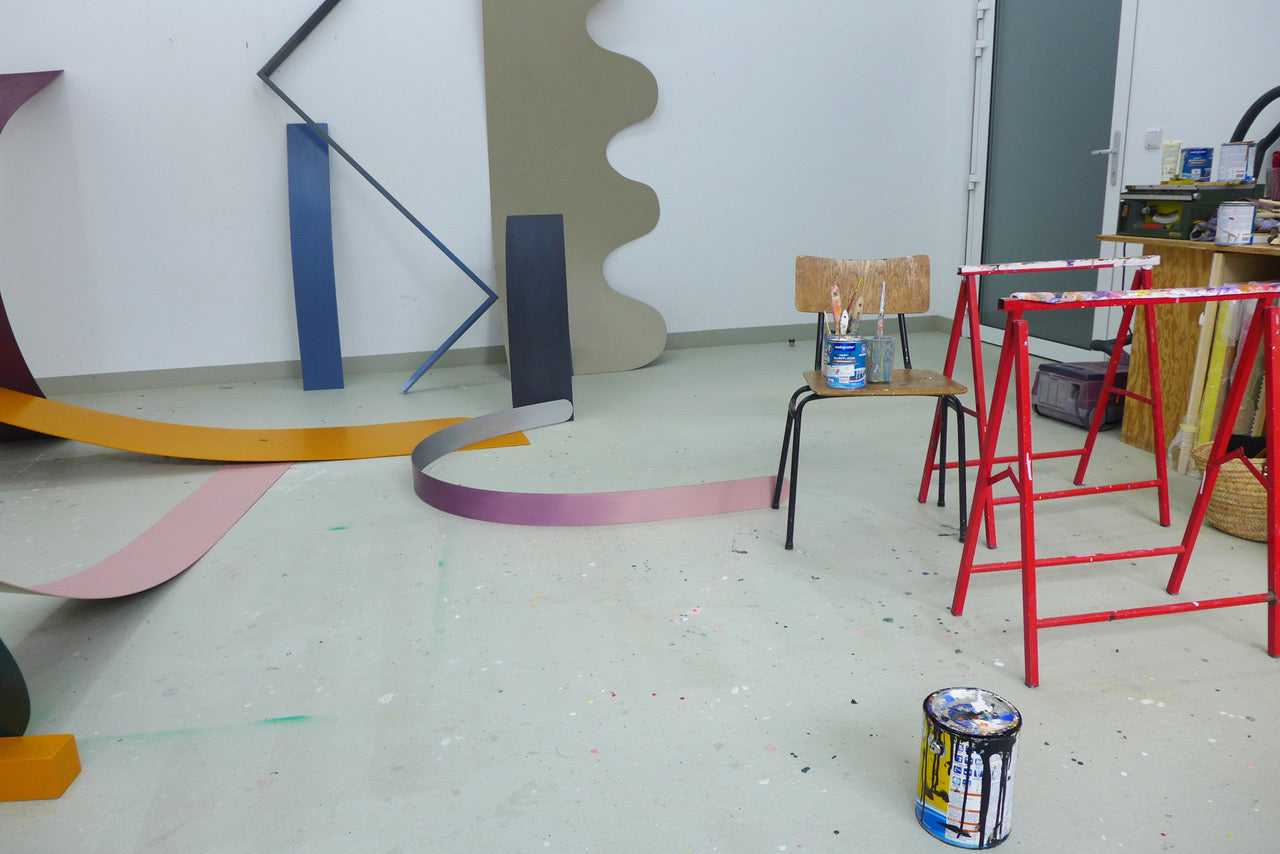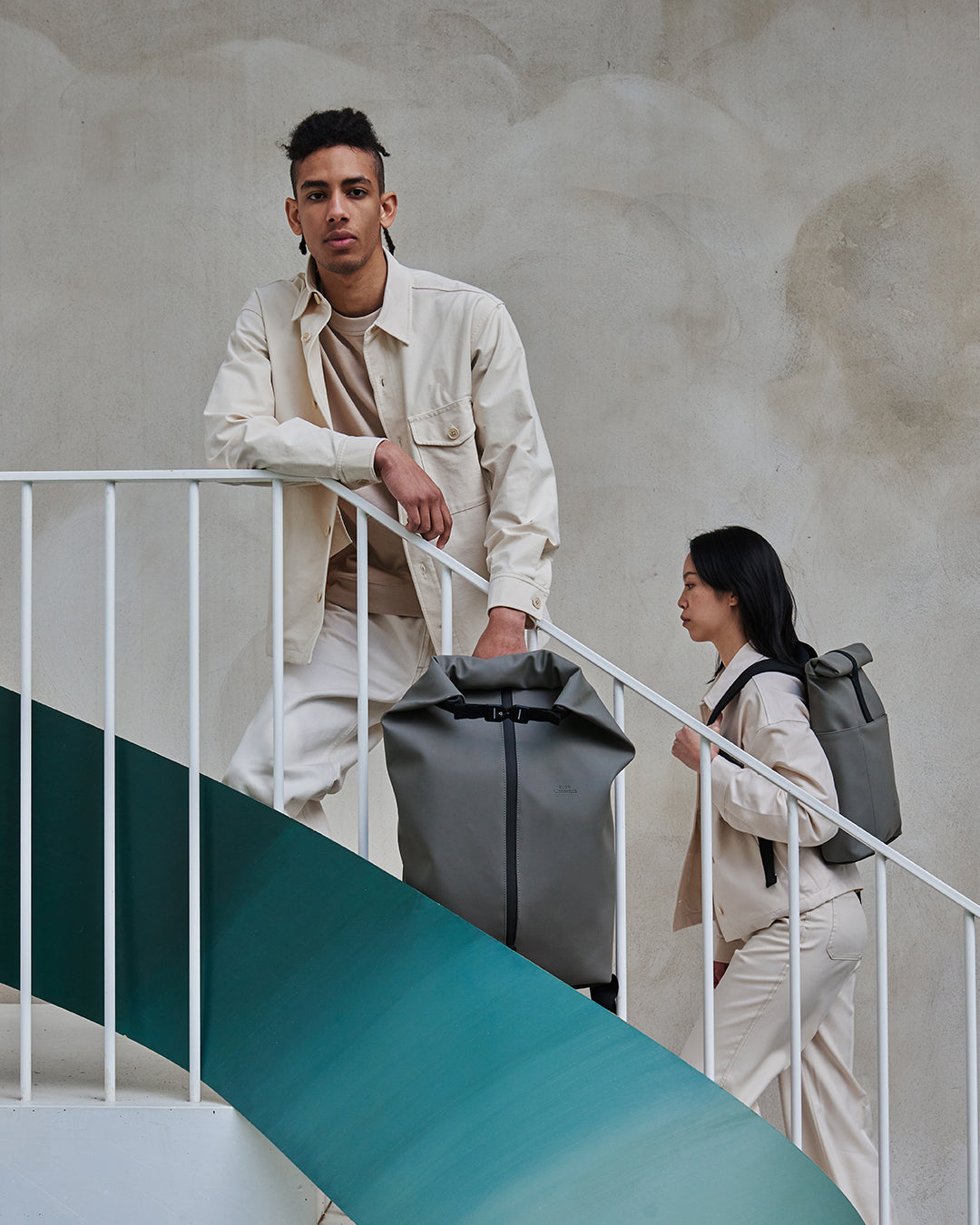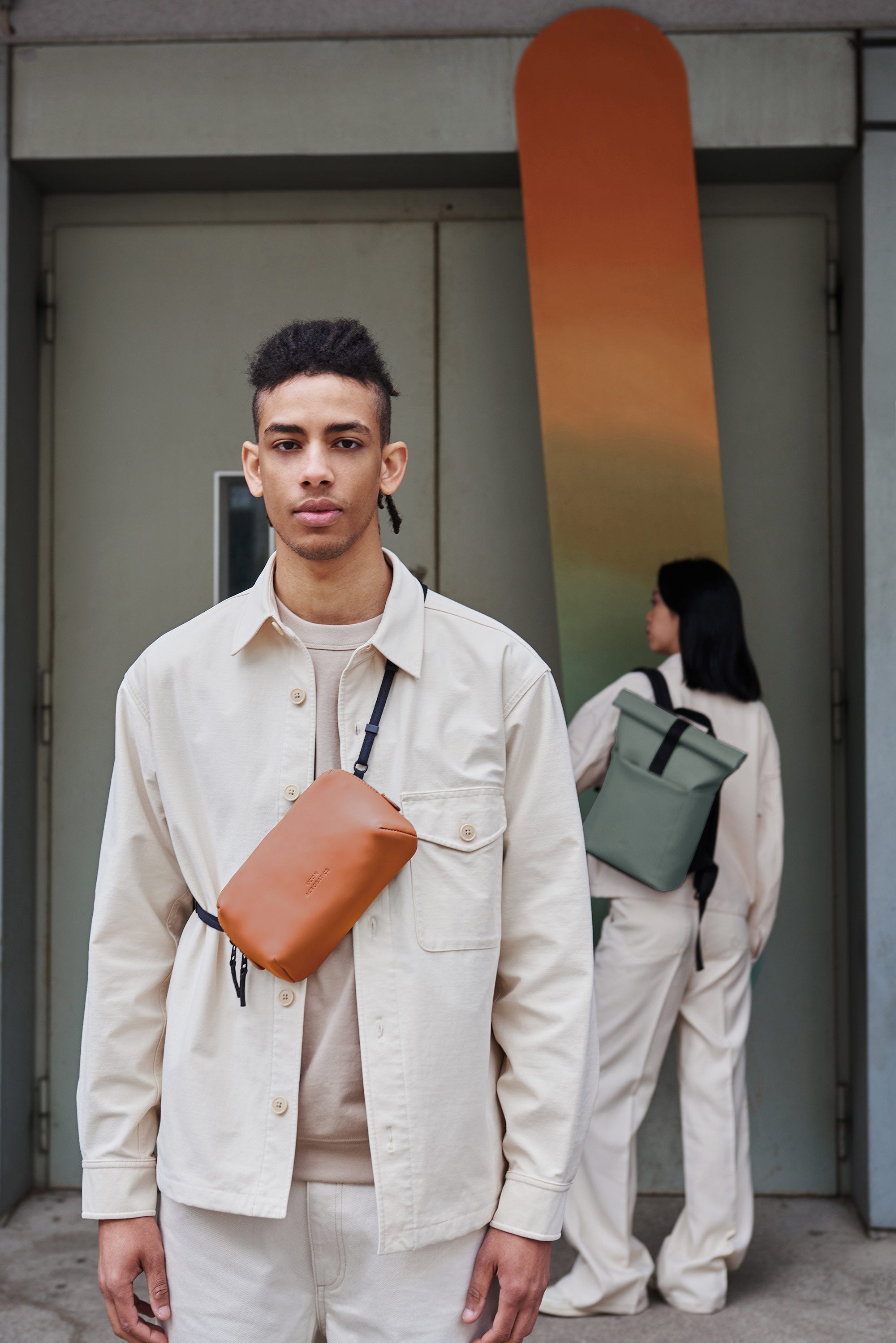





Artist Collaboration
Katharina
Trudzinski
Die in Hamburg aufgewachsene Künstlerin und Textildesignerin Katharina Trudzinski entschied sich Anfang 2009 für einen zweiten Wohnsitz in Berlin, wo sie am Rande des kreativen Stadtteils Neukölln einen Raum zum Arbeiten fand. Sie beschreibt sich selbst als multidisziplinäre Künstlerin, die skulpturale Installationen mit wunderschönen Überschneidungen von Farben, Flächen und geometrischen Formen schafft. Ihre Arbeiten bestehen aus Konstellationen von Abfällen, Fundstücken von der Straße und alltäglichem Gerümpel, die in perfekt kalibrierte Farbtöne gehüllt sind und einen Dialog mit ihrer Umgebung herstellen. Ihre farbenfrohen, spielerisch komponierten und mit fachmännischer Präzision und Technik ausgeführten Arbeiten waren die perfekte Ergänzung für unsere Lotus-Serie.

Katharina Trudzinski
Artist
Berlin, Deutschland
Berlin, Deutschland
Artist Collaboration
Interview
Du hast dich entschieden, aus Hamburg wegzuziehen und dir einen Zweitwohnsitz in Berlin zuzulegen. Warum hast du dich für Berlin entschieden und kannst du uns ein bisschen mehr über deinen Wohn- und Arbeitsraum in Neukölln erzählen?
Ich bin in Hamburg zur Schule gegangen und habe dort auch studiert. Berlin wirkte auf mich immer wie der große, aufregende Nachbar. Die Mieten für Wohnungen und Arbeitsräume waren damals (2009) noch günstig, und die Kunstszene war groß und international. Freunde von mir lebten bereits in Neukölln. Nach meinem Abschluss habe ich eine günstige Wohnung in der Sonnenallee gefunden, die ich gleichzeitig als Atelier genutzt habe. Monatelang war ich mit der Renovierung beschäftigt. Heute wohne ich immer noch in derselben Wohnung und habe ein schönes Atelier in Treptow. Die Sonnenallee ist eine sehr belebte und volle Straße. Die Vermüllung im Kiez nervt manchmal, aber es gibt auch eine gute Seite daran: Ich finde oft Arbeitsmaterial wie Möbelreste und Holz auf der Straße.
Ich bin in Hamburg zur Schule gegangen und habe dort auch studiert. Berlin wirkte auf mich immer wie der große, aufregende Nachbar. Die Mieten für Wohnungen und Arbeitsräume waren damals (2009) noch günstig, und die Kunstszene war groß und international. Freunde von mir lebten bereits in Neukölln. Nach meinem Abschluss habe ich eine günstige Wohnung in der Sonnenallee gefunden, die ich gleichzeitig als Atelier genutzt habe. Monatelang war ich mit der Renovierung beschäftigt. Heute wohne ich immer noch in derselben Wohnung und habe ein schönes Atelier in Treptow. Die Sonnenallee ist eine sehr belebte und volle Straße. Die Vermüllung im Kiez nervt manchmal, aber es gibt auch eine gute Seite daran: Ich finde oft Arbeitsmaterial wie Möbelreste und Holz auf der Straße.


Deine Arbeiten bestehen aus Konstellationen von Schrott, Straßenfunden und alltäglichem Kram, der in perfekt abgestimmte Farbtöne gehüllt ist. Wirst du beim Spazierengehen durch die Straßen Berlins inspiriert?
Die Straßen Berlins sind für mich eine große Inspirationsquelle. Ich liebe die unterschiedlichen Atmosphären der Kieze und wie sie sich mit den Jahreszeiten verändern. Besonders mag ich die tristen Wohnblöcke in den Wohngegenden von Neukölln, Kreuzberg und Treptow. Die Stadt ist nicht nur eine Quelle für Materialien, sondern auch Kulisse für viele meiner Arbeiten. Ich fotografiere meine Skulpturen oft direkt auf der Straße. Auch meine „Ein-Minuten-Skulpturen“ mache ich draußen. Gerade während der Lockdowns und der sozialen Isolation in der Corona-Zeit habe ich viele dieser Arbeiten gemacht – sie treten gezielt in Interaktion mit der Architektur in meiner Umgebung. Am Anfang steht bei mir fast immer ein langer Spaziergang durch die Nachbarschaft.
Du hast ein außergewöhnliches Gespür für Farbpaletten und wilde Techniken, die wahrscheinlich so manchen Galeriebesucher ins Staunen versetzen. Welche Rolle spielen Farben in deiner Kunst?
Farbe ist für mich unglaublich wichtig. Sie kann alles verändern und eine Arbeit in eine ganz neue Richtung lenken. Ihre Wirkung ist sehr direkt – sie kann sowohl Geborgenheit als auch Unbehagen auslösen.
Die Straßen Berlins sind für mich eine große Inspirationsquelle. Ich liebe die unterschiedlichen Atmosphären der Kieze und wie sie sich mit den Jahreszeiten verändern. Besonders mag ich die tristen Wohnblöcke in den Wohngegenden von Neukölln, Kreuzberg und Treptow. Die Stadt ist nicht nur eine Quelle für Materialien, sondern auch Kulisse für viele meiner Arbeiten. Ich fotografiere meine Skulpturen oft direkt auf der Straße. Auch meine „Ein-Minuten-Skulpturen“ mache ich draußen. Gerade während der Lockdowns und der sozialen Isolation in der Corona-Zeit habe ich viele dieser Arbeiten gemacht – sie treten gezielt in Interaktion mit der Architektur in meiner Umgebung. Am Anfang steht bei mir fast immer ein langer Spaziergang durch die Nachbarschaft.
Du hast ein außergewöhnliches Gespür für Farbpaletten und wilde Techniken, die wahrscheinlich so manchen Galeriebesucher ins Staunen versetzen. Welche Rolle spielen Farben in deiner Kunst?
Farbe ist für mich unglaublich wichtig. Sie kann alles verändern und eine Arbeit in eine ganz neue Richtung lenken. Ihre Wirkung ist sehr direkt – sie kann sowohl Geborgenheit als auch Unbehagen auslösen.


Als Bildhauerin und Malerin schaffst du Werke, die der Logik trotzen und direkt die Sinne der Betrachtenden ansprechen. Ist es deine Absicht, sie mit deinem spannenden Umgang mit Raum und Form ein Stück weit zu verlieren?
Den Blick und den Geist der Betrachtenden einzufangen, ist ein hohes Ziel – und ich freue mich, wenn es gelingt. In der zeitgenössischen Kunst sind die Regeln und Codes der Szene oft ziemlich eng gefasst, und man sollte sie nicht allzu ernst nehmen. Ich finde es großartig, wenn meine Arbeiten über kulturelle und generationelle Grenzen hinweg Freunde finden.
Den Blick und den Geist der Betrachtenden einzufangen, ist ein hohes Ziel – und ich freue mich, wenn es gelingt. In der zeitgenössischen Kunst sind die Regeln und Codes der Szene oft ziemlich eng gefasst, und man sollte sie nicht allzu ernst nehmen. Ich finde es großartig, wenn meine Arbeiten über kulturelle und generationelle Grenzen hinweg Freunde finden.


YDu hast eine Ausbildung im Bereich Textildesign und sogar eine eigene Modekollektion herausgebracht. Inwiefern beeinflusst dich das heute noch in deiner Arbeit?
Bei meiner früheren Firma hui-hui habe ich viele Digitaldrucke auf Stoff gemacht. In meiner jetzigen Arbeit verwende ich keine Textilien, aber das Prinzip, eine Fläche konstruktiv auszufüllen, bleibt für mich sehr wichtig. Das Gleiche gilt für die Farbkomposition, den Rhythmus, die Verteilung und die Wiederholung. Ich habe auch die handwerkliche Arbeit tief verinnerlicht, eine langsame Arbeitsweise, als ob ich einen Teppich weben würde.
Thank you!
Bei meiner früheren Firma hui-hui habe ich viele Digitaldrucke auf Stoff gemacht. In meiner jetzigen Arbeit verwende ich keine Textilien, aber das Prinzip, eine Fläche konstruktiv auszufüllen, bleibt für mich sehr wichtig. Das Gleiche gilt für die Farbkomposition, den Rhythmus, die Verteilung und die Wiederholung. Ich habe auch die handwerkliche Arbeit tief verinnerlicht, eine langsame Arbeitsweise, als ob ich einen Teppich weben würde.
Thank you!
























